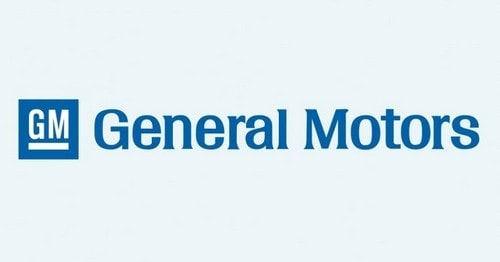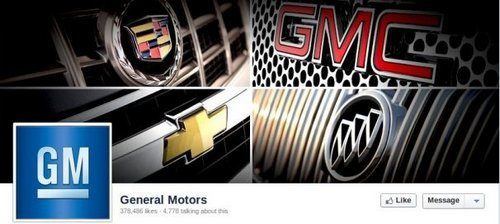The Marketing mix of General Motors analyses the 4Ps of General Motors, which includes the Product, Price, Place, and Promotion of General Motors. General Motors is commonly referred to as GM and is of American origins. It is a public company associated with the automotive industry and deals with various aspects of vehicles and their parts. Present General Motors Company LLC came into existence in the year 2009 after the restructuring of its previous bankrupt company, which was called General Motors Corporation and was formed in the year 1908. The company faces stiff competition in the consumer market from several rival companies and, some of them are as follows-
- Tata Motors
- Hyundai
- Honda
- Toyota
- Chrysler
- BMW
- Ford
About General Motors
- Type: Automobile manufacturer.
- Industry: Automotive.
- Founded: 16 September 1908, Flint, Michigan, United States.
- Founders: William C. Durant, Charles Stewart Mott, Frederic L. Smith.
- Headquarters: Detroit, Michigan, United States.
- Area served: Worldwide.
- Current CEO: Mary Barra.
- Number of employees: Over 167,000
- Major products: Cars, trucks, and automobile parts.
Table of Contents
General Motors Product Strategy
General Motors is a multinational corporation that manufactures, designs, distributes, and markets automobiles and their components.
It is also involved in financial services related to the vehicle sector. It has several joint ventures; in GM Korea, it has a 77% stake, and in IMM, it has a 20% stake. One of GM’s subsidiaries, OnStar, offers vehicle security, safety, and information services. General Motors has twelve brands under its umbrella for vehicle production, including Ravon, Jie Fang, Baojun, Wuling, Vauxhall, Opel, HSV, Holden, Cadillac, GMC, Buick, and Chevrolet.
The company has a comprehensive product range in the global market. Under the consumer vehicles section, it manufactures and sells Cruze and Sail Sedan in the Sedans category, Spark, Sail-UVA Beat in Hatchbacks, and Enjoy, Tavera, and Captiva in SUVs. It has various firsts to its name, like introducing all-electric vehicles and using hydrogen fuel cells for powering engines. GM has a deal with Honda for mass production of hydrogen fuel cells that will be used in cars by 2020. By the end of the year 2015, it sold 9.8 million units in the global market to earn the first position as the highest seller.
The product mix of General Motors in 2023 is as follows(Source)
- Chevrolet: Passenger Cars: Models like the Chevrolet Malibu, Impala (as of 2020), Spark, SUVs, and Crossovers, Including the Chevrolet Equinox, Traverse, Tahoe, and Suburban. Trucks: The Chevrolet Silverado and Colorado are popular pickup truck options. Electric Vehicles (EVs): Chevrolet offers electric vehicles such as the Chevrolet Bolt EV and, in some regions, the upcoming Chevrolet Bolt EUV.
- GMC: SUVs: GMC manufactures SUVs like the Acadia, Terrain, Yukon, and Yukon XL; Trucks: The GMC Sierra lineup includes light-duty and heavy-duty trucks. Electric Vehicles (EVs): GMC introduced the Hummer EV, an all-electric pickup truck.
- Buick: Luxury SUVs: Models like the Buick Encore, Envision, and Enclave. Sedans: Buick offers sedans like the Regal (availability may vary by region).
- Cadillac: Luxury Sedans: The Cadillac CT4, CT5, and CT6. Luxury SUVs: Cadillac produces XT4, XT5, XT6, and Escalade. Electric Vehicles (EVs): Cadillac is working on electric vehicles as a future product strategy.
- Cadillac Electric Vehicles: Cadillac Lyriq: An all-electric luxury SUV, Cadillac Celestiq: An upcoming high-end electric sedan.
- Chevrolet Performance: Chevrolet Camaro: A high-performance sports car; Chevrolet Corvette: A world-renowned sports car.
- Commercial Vehicles: GM offers commercial vehicles under various brand names like Chevrolet and GMC, including vans and trucks designed for commercial and fleet use.
- Future Electric Vehicles: General Motors has announced plans to introduce a wide range of electric vehicles across its brands in the coming years, including electric trucks and SUVs under the Chevrolet, GMC, and Cadillac nameplates.
General Motors Place Strategy
General Motors has a robust domestic market in the United States. It is an international company with a global presence that is spread in nearly thirty-seven countries of the world. General Motors has business relations with almost one hundred and forty countries like the United Kingdom, Russia in Europe, China, Korea, and India in Asia, Canada in North America, Argentina, Brazil, Venezuela, and Columbia in South America, Egypt, Tunisia in Africa, New Zealand, and Australia in Oceania. The company has its headquarters based in Michigan in the United States.
General Motors has a wide-spread distribution network for providing efficient results through several assemblies and manufacturing plants in countries like Spain, China, Russia, Poland, South Africa, and Thailand. It has extensive centers for distribution, warehousing, and regional offices in numerous countries. It operates through fully-owned subsidiary companies outside the United States except China, where it acts through ten joint ventures.
Here are five key points regarding GM’s place strategy:
- Extensive Dealership Network: General Motors maintains a vast network of dealerships and authorized retailers worldwide, ensuring that its vehicles are accessible to customers in urban and rural areas alike.
- Online Presence: GM has embraced e-commerce and offers online platforms that allow customers to explore vehicle options, configure their choices, and even initiate the purchase process digitally, providing convenience and accessibility.
- Global Presence: GM’s global footprint extends to numerous countries, with manufacturing facilities and distribution centers strategically located to serve regional markets efficiently.
- Partnerships and Alliances: GM has formed partnerships and alliances with other automotive manufacturers and mobility service providers, enabling it to expand its reach and offer customers a more comprehensive range of products and services.
- Multichannel Approach: GM employs a multichannel distribution approach, combining traditional dealership sales with online sales, fleet sales, and partnerships with rental companies, ensuring customers have diverse options for acquiring GM vehicles.
General Motors Pricing Strategy
General Motors is one of the pioneers in the automobile sector and has consistently appeared in the top-ten automaker list regarding net income and annual revenues. The automobile industry is highly competitive, and to successfully face the challenges presented by its competitors, General Motors has adopted a competitive pricing policy.
The company has produced a diversified range of products with different price ranges to suit the needs of varied sections of the consumer market. The product range includes reasonably priced items to make them pocket-friendly to its customers and luxury vehicles with a mid-premium pricing policy. General Motors offers its customers a value-based policy to purchase according to their needs and requirements.
Here’s an overview of GM’s price strategy:
- Value-Based Pricing: General Motors understands the importance of pricing its vehicles competitively based on the perceived value they offer to customers. This means that prices are determined by factors such as the vehicle’s features, performance, quality, and the benefits it provides to the customer. GM often conducts market research to assess customer preferences and competitors’ pricing to ensure its prices align with its vehicles’ perceived value.
- Price Segmentation: GM recognizes that different customer segments have varying price sensitivities and preferences. GM offers a diverse portfolio of vehicles at different price points to cater to a wide range of customers.
- Incentives and Discounts: General Motors frequently uses incentives, discounts, and promotions to stimulate demand and drive sales. These include cash rebates, low-interest financing, lease offers, and loyalty programs. By carefully timing and structuring these promotions, GM can influence buying decisions and respond to market fluctuations.
- Regional Pricing: GM considers regional variations in economic conditions, consumer preferences, and competitive landscapes. This leads to localized pricing strategies to remain competitive and appealing to customers in specific geographic areas.
- Pricing Transparency: In today’s information-rich environment, pricing transparency is crucial. GM provides clear and easily accessible pricing information on its website and through dealerships. This transparency helps build customer trust and allows them to make informed purchase decisions.
General Motors Promotion Strategy
Marketing strategy is an integral part of General Motors’ marketing strategy, and they have succeeded in creating visibility through various promotional activities. It has taken several initiatives to conserve the environment by recycling or refilling most of its production wastes.
General Motors utilizes an integrated promotion and advertising strategy, including digital marketing, television advertising, and sponsorship of sports events, to build brand awareness and engage with consumers. They leverage partnerships with celebrities and influencers to showcase their vehicles and emphasize innovation and sustainability to align with changing market trends.
It provides a helping hand to communities through its foundation, and the company invests heavily in an outreach program and scholarships. General Motors has actively participated in several events and sports categories to create positive brand awareness, including the Supercars Championship, SCCA, NASCAR, 24 Hours of Le Mans, and the World Touring Car Championship. The brand has also been an avid donator and has funded several conservation projects.
Some Recent Video ads and Print ads of General Motors are:
https://www.youtube.com/watch?v=BBJBDQcCZpg
Liked this post? Check out the complete series on Marketing Mix

